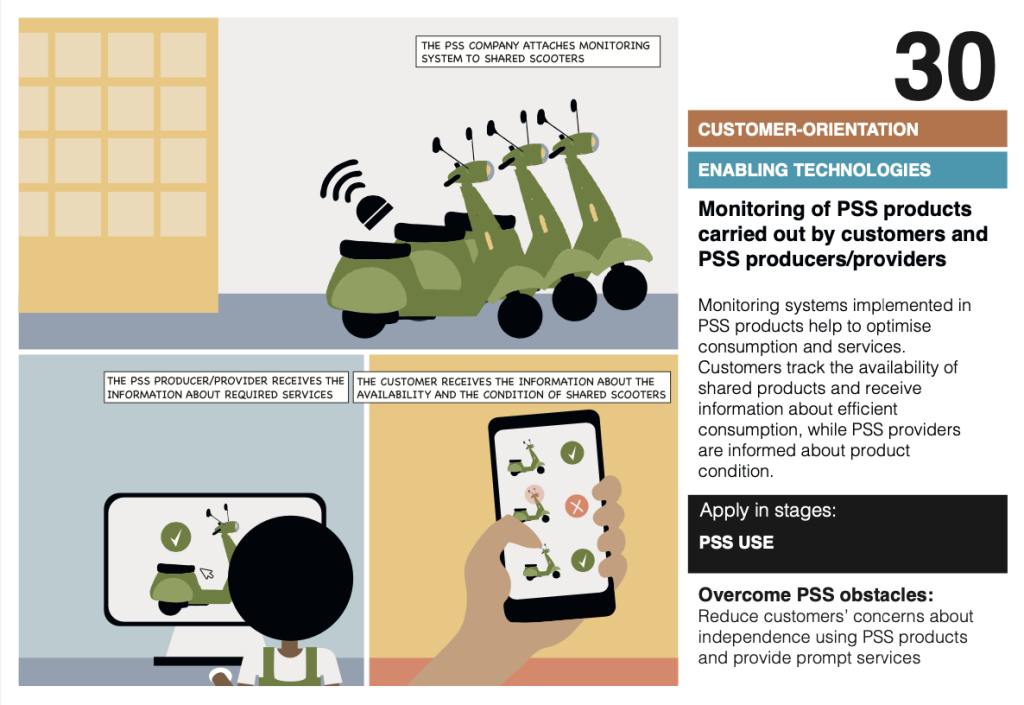
- Date
- 22nd November 2024
- Categories
- IoT-enabled eCooking
By Dr Aine Petrulaityte, MECS Programme.
Last month Dr Simon Bachelor OBE wrote a blog about eCooking appliance retailers having to proactively nudge their customers to use their stoves as much as possible to fully realise the benefits of carbon financing. His insights resonated with me, reminding me of my PhD research on product-service systems—sustainability-focused business models in which customers are only given access to products while their ownership remains with the provider (bicycle sharing scheme—like Guraride in Kigali— is the most immediate example that comes to my mind when I have to explain product-service systems). In these business models, the service provider has an economic interest in offering durable, high-quality products and extending their life span as much as possible, ensuring they continue to generate income with each use or delivered outcome.
Clean cooking companies involved in carbon finance projects still sell appliances to their customers, but often at a price up to 10 times lower than the typical retail cost. This affordability for customers comes with an added retailer responsibility to ensure the appliances are actively used. Otherwise, the retailers bear the financial burden to cover the cost difference themselves.
The outcome of my PhD research was 40 near-future scenarios of how the development of product-service systems will benefit from advanced technologies, such as 3D and even 4D printing and the Internet of Things (IoT). Six of these scenarios focused on the application of remote monitoring technologies, similar to those now used in the metered methods of carbon finance projects. I am pleased to see that the future I forecasted in 2019 is increasingly becoming part of our modern, clean cooking conversations today.

To sell eCooking appliances through high-integrity carbon finance projects, retailers can equip them with IoT components and often GPS trackers to be able to monitor real-time usage. This way, they can track when, where and for how long each appliance is used and which power settings and automated features are selected. Access to this data provides retailers with a tremendous amount of user behaviour insights, which can be used to gather more in-depth qualitative user feedback towards improving the product and overall service. No more guesswork, no more inaccurate NPS, or vague CSAT metrics—retailers now have real-time data to measure how effectively they are meeting market needs.
Simon’s call for companies to take a more active role post-sale and to do ‘sales’ after selling, is very timely. The carbon market is still in its early stage, but its value is projected to reach $1 trillion by 2037, provided that the quality of carbon credits improves. eCooking appliance retailers selling stoves through carbon credits are just beginning to grasp the importance of incentivising users to use their stoves (and penalising them for doing otherwise). Some companies use WhatsApp groups for after-sales engagement, where they organise recipe competitions with prizes and rewards for frequent users. Platforms, like Hubspot, allow WhatsApp Business users to create customised messages ensuring the right content reaches the right customer group, as standardised messages resonate only with certain audiences.
Other IoT-enabled eCooking appliances come with customer apps—like myECOA by BURN—that display usage data and offer customer support. These apps can also send automated messages to individual users, encouraging them to try different recipes or inquire about gaps in cooking activity. App-related messages (including push notifications, alerts, and in-app messages, among others) can be tailored to each user using customer engagement platforms like CleverTap. These platforms allow customer segmentation based on different parameters, like Recency, Frequency and Monetary value (RFM), so each group gets personalised, therefore relevant messages, promotions, and rewards that encourage product use. These incentives can eventually evolve into loyalty programmes that foster long-term relationships between the brand and its customers.
Monetary incentives are the ones of the most commonly used by businesses. In 2023, IoT-enabled induction cookstove provider ATEC, in partnership with MECS, piloted ‘Cook-to-Earn’—an incentive which rewards heavy users with carbon credit micropayments deposited directly into their mobile money accounts. The pilot found that monetary rewards were most effective for new customers, boosting their usage by up to 56%. However, for existing customers, it was significantly less effective with their usage increasing by up to 21%. These results illustrate the need for tailored nudges and incentives, as a one-size-fits-all approach is unlikely to yield optimal results.
With control over IoT-enabled eCooking appliances, there is so much retailers can do to personalise their customers’ cooking experience. By tracking real-time usage, retailers can provide tailored after-sales repair and maintenance services. For instance, a user who has heavily but responsibly used their appliance might qualify for free parts replacement, whereas someone who has mishandled the stove without significant use may not receive the same benefits. IoT truly unlocks unlimited possibilities.
Clean cooking companies are becoming increasingly high-tech, and it’s exciting to see technology driving innovative clean cooking solutions for low-income users. There will be challenges as we move into this new territory of retailer-customer communication driven by customer’s personal data. Coming from Global North, I can’t help but consider the potential customer data privacy issues that could occur if this real-time eCooking appliance data is not handled responsibly. While customers in the Global South often welcome the opportunity to receive heavily discounted appliances in exchange for monitoring their cooking habits, retailers must implement robust measures to safeguard the personal data of their customers.
Nevertheless, I don’t want to end on a challenge but rather look forward to the excitement of the technological possibilities that make modern eCooking appliances accessible to those who might otherwise be unable to afford them.
***************************************************************************************************************
Featured Image: Copyright of BURN.